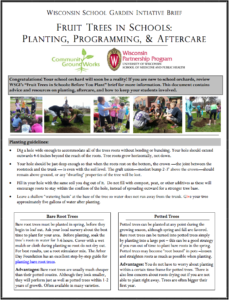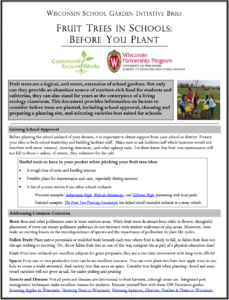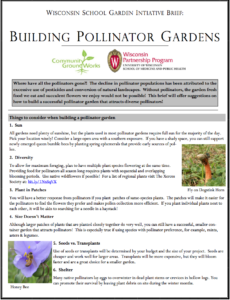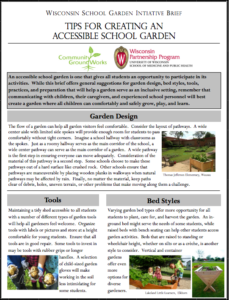 Congratulations! Your school orchard will soon be a reality! If you are new to school orchards, review our brief, “Fruit Trees in Schools: Before You Plant,” for more information. This document contains advice and resources on planting, aftercare, and how to keep your students involved. Download Brief »
Congratulations! Your school orchard will soon be a reality! If you are new to school orchards, review our brief, “Fruit Trees in Schools: Before You Plant,” for more information. This document contains advice and resources on planting, aftercare, and how to keep your students involved. Download Brief »
Fruit Trees in Schools: Before You Plant
 Fruit trees are a logical, and sweet, extension of school gardens. Not only can they provide an abundant source of nutrient-rich food for students and cafeterias, they can also stand for years as the centerpiece of a living ecology classroom. This document provides information on factors to consider before trees are planted, including school approval, choosing and preparing a planting site, and selecting varieties best suited for schools. Download Brief »
Fruit trees are a logical, and sweet, extension of school gardens. Not only can they provide an abundant source of nutrient-rich food for students and cafeterias, they can also stand for years as the centerpiece of a living ecology classroom. This document provides information on factors to consider before trees are planted, including school approval, choosing and preparing a planting site, and selecting varieties best suited for schools. Download Brief »
Composting at School
 This brief provides an overview of how composting can be integrated into schools. It includes composting logistics, student involvement ideas, compost activities for the classroom and garden, and links to relevant resources. Composting is a hands-on way to teach students about the science of decomposition, landfill alternatives, microorganisms, and much more. It requires only a small space and brings a school garden full circle, from seed to soil. Composting can help your school reduce its environmental impact and teach service learning to students through making a positive change for the environment, their peers, and their school. Additionally, finished compost can offer a potential fundraiser and saves the school money on compost for the school garden and trash removal services. Download Brief »
This brief provides an overview of how composting can be integrated into schools. It includes composting logistics, student involvement ideas, compost activities for the classroom and garden, and links to relevant resources. Composting is a hands-on way to teach students about the science of decomposition, landfill alternatives, microorganisms, and much more. It requires only a small space and brings a school garden full circle, from seed to soil. Composting can help your school reduce its environmental impact and teach service learning to students through making a positive change for the environment, their peers, and their school. Additionally, finished compost can offer a potential fundraiser and saves the school money on compost for the school garden and trash removal services. Download Brief »
Building Pollinator Gardens
 Where have all the pollinators gone?! The decline in pollinator populations has been attributed to the excessive use of pesticides and conversion of natural landscapes. Without pollinators, the garden fresh food we eat and succulent flowers we enjoy would not be possible! This brief will offer suggestions on how to build a successful pollinator garden that attracts diverse pollinators! Download Brief »
Where have all the pollinators gone?! The decline in pollinator populations has been attributed to the excessive use of pesticides and conversion of natural landscapes. Without pollinators, the garden fresh food we eat and succulent flowers we enjoy would not be possible! This brief will offer suggestions on how to build a successful pollinator garden that attracts diverse pollinators! Download Brief »
Tips for Creating an Accessible School Garden
 An accessible school garden is one that gives all students an opportunity to participate in its activities. While this brief offers general suggestions for garden design, bed styles, tools, practices, and preparation that will help a garden serve as an inclusive setting, remember that communicating with children, their caregivers, and experienced school personnel will best create a garden where all children can comfortably and safely grow, play, and learn. Download Brief »
An accessible school garden is one that gives all students an opportunity to participate in its activities. While this brief offers general suggestions for garden design, bed styles, tools, practices, and preparation that will help a garden serve as an inclusive setting, remember that communicating with children, their caregivers, and experienced school personnel will best create a garden where all children can comfortably and safely grow, play, and learn. Download Brief »
